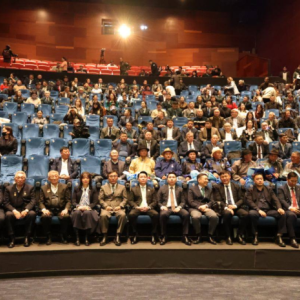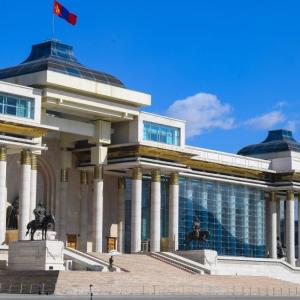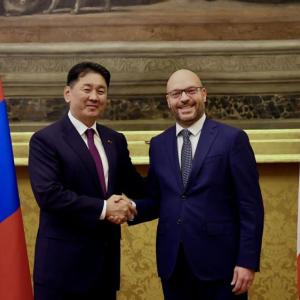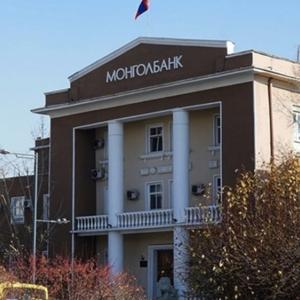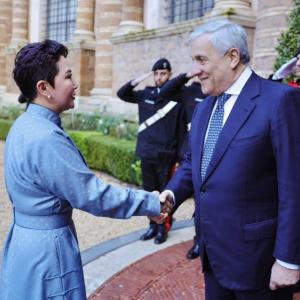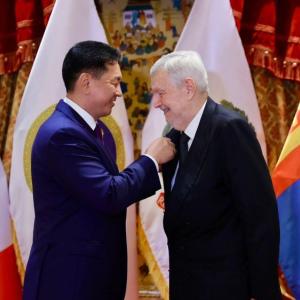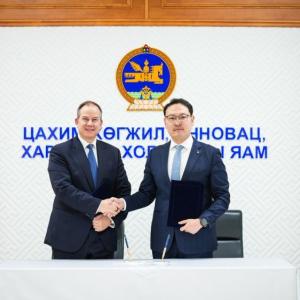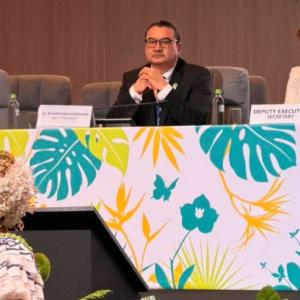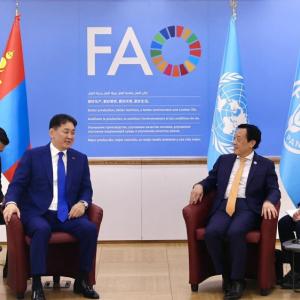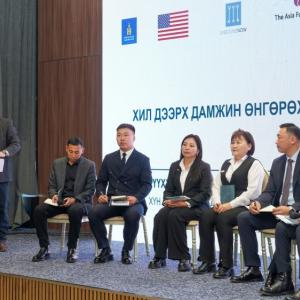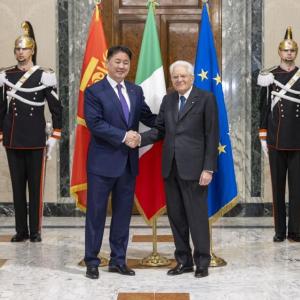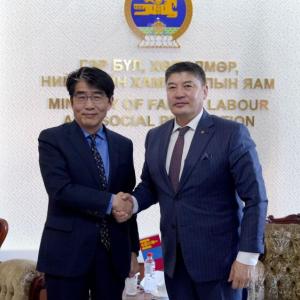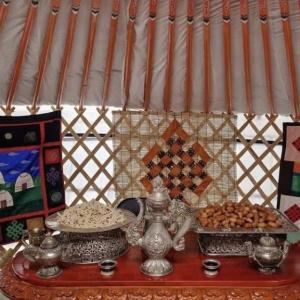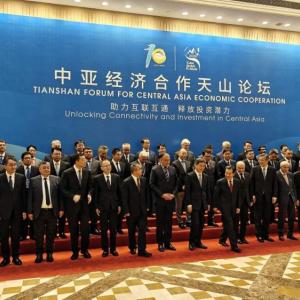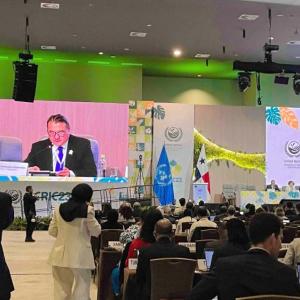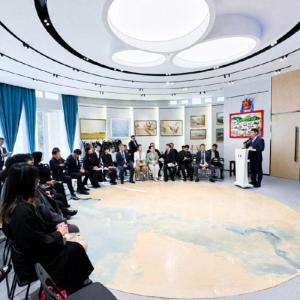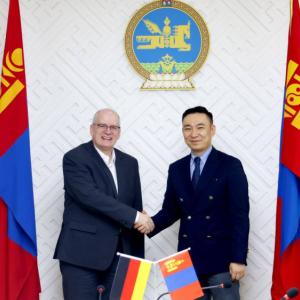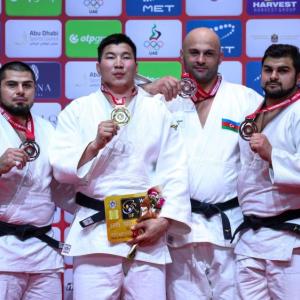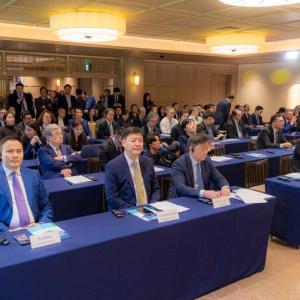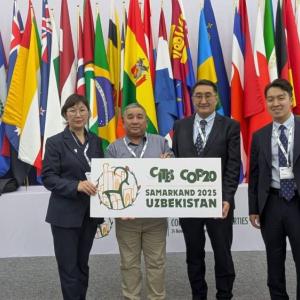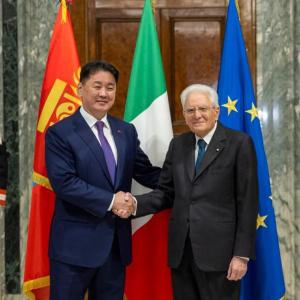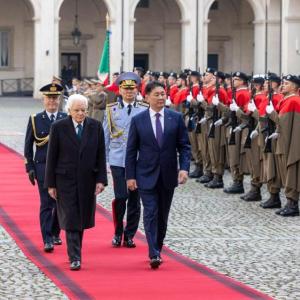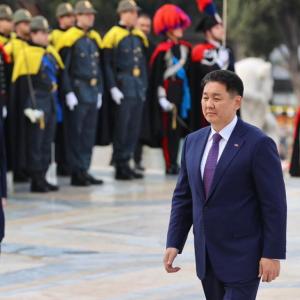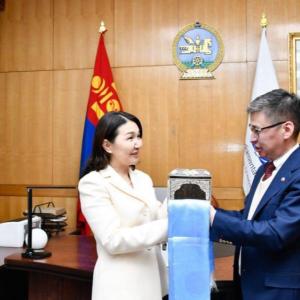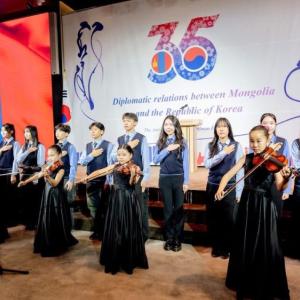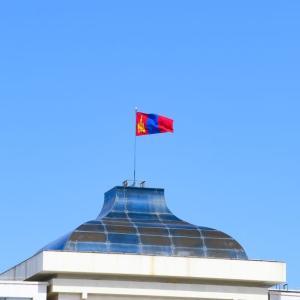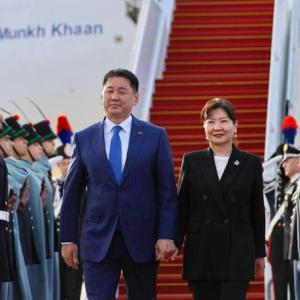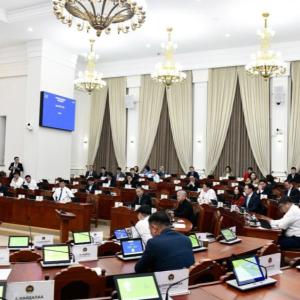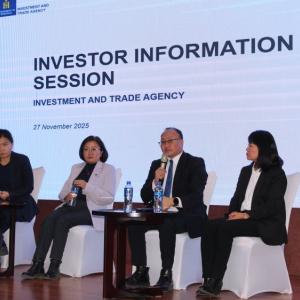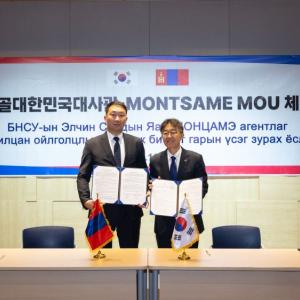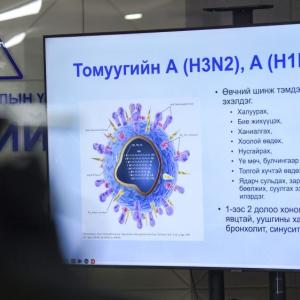“It took me 20 years to become able to complete a piece within a month”
Art & Culture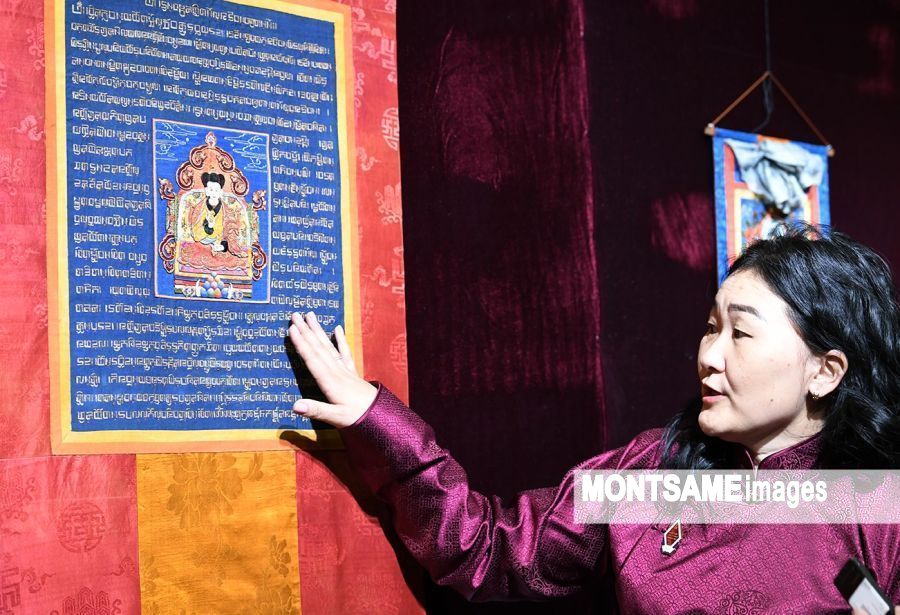
Ulaanbaatar
/MONTSAME/. On May 18, a family of artists – embroiderer M.Ganbold and State
Embroiderer, Leading Cultural Worker S.Bud opened their exhibition titled ‘Khos
Shaglaa’ at the Bogd Khan Palace Museum.
The artists
unveiled artworks that were made with certain techniques considered to be of valuable
cultural heritage of Mongolia, such as embroidery, needlework, and silk
applique.
Artists emphasized that the main piece of the exhibition, ‘Golden Soyombo’, was created with the purpose of promoting the art of embroidery to the next generations. During the exhibition, embroiderer S.Bud gave us an interview.
- It
is interesting that the exhibition unveils works that created by members of one
family. Could you tell us when you started doing embroidery?
-My husband M.Ganbold was born in Uvurkhangai aimag. His childhood interest in painting led him to become specialized in the technique of ‘Uyanga Khiits’, making traditional ornaments and household furniture with wood for gers. He set foot in the art of needlework and embroidery in 2009. I am from Nomgon soum of Umnugovi aimag. As for me, I learned embroidery from class when I was at school. I began to specifically create embroidery pieces from 2007.
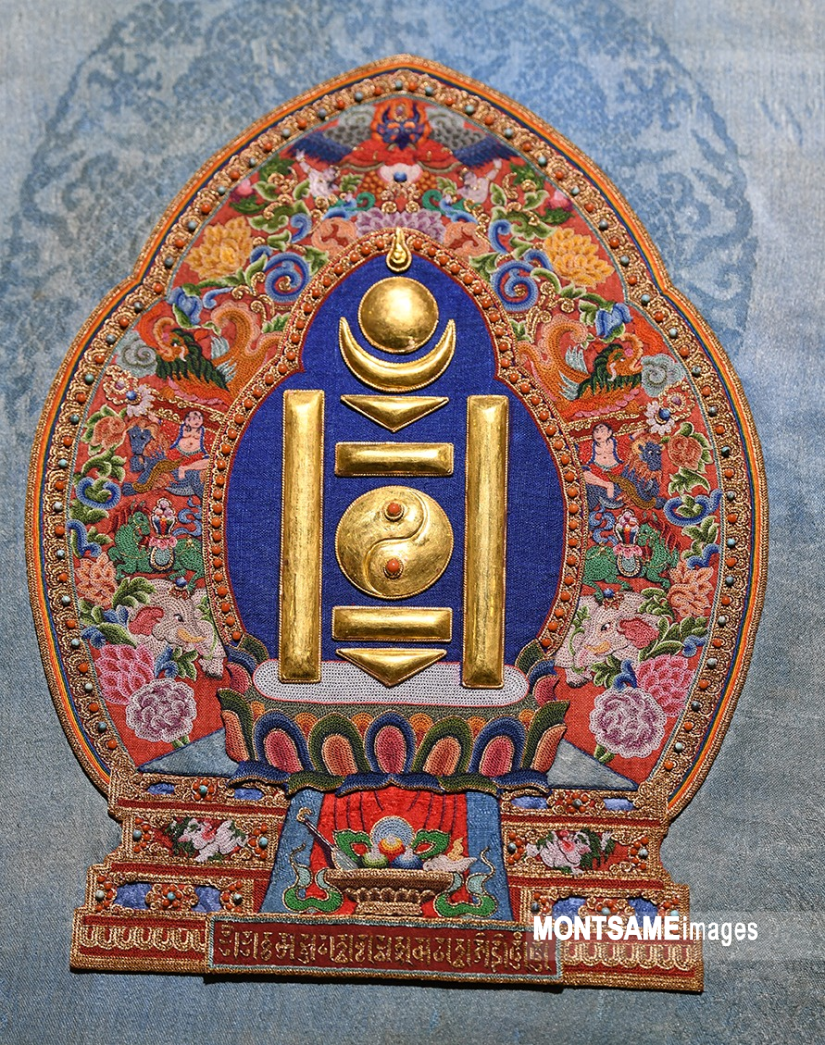
- The
embroidery works made by the both of you are really eye-catching. Could you
tell us more about the highlight of the exhibition?
-We have just finished our piece ‘Undur gegeen Janlavtsogzol’. Moreover, one of our highlight pieces named ‘Golden Soyombo’ have also won the ‘Khaan Buteel’ award from the competition organized by the Bogd Khan Palace Museum and ‘Mandchirin Naran’ NGO in 2022.
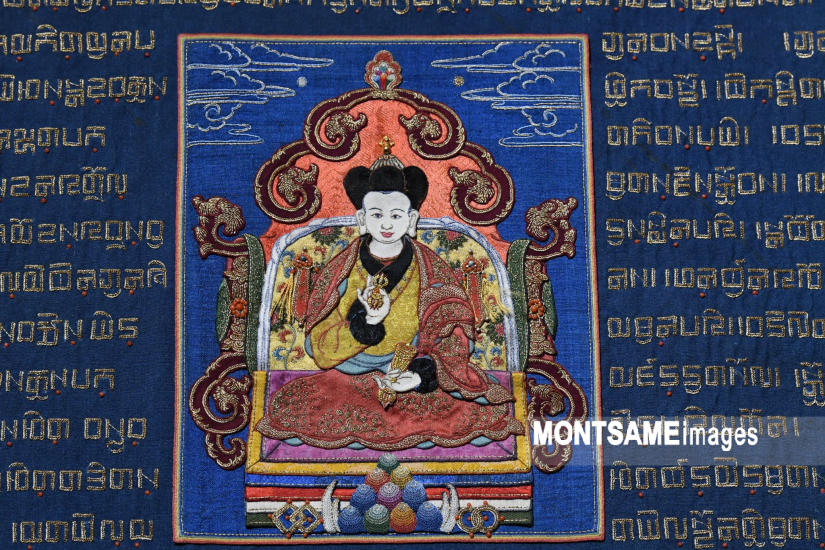
-Out
of curiosity, how many pearls were used for the hat decorated with pearls?
-About 8,500 pearls were used for decorating the hat – and it is still not complete yet. I have worked on it for over a month. It took me 20 years to become able to complete a piece within a month. We are only able to bring our works to the public after taking a lot of time. Particularly, people tend to think that we created the ‘Golden Soyombo’ piece in a short amount of time. In reality, it was created as a result of the tireless efforts put in by many people over the course of 20 years.
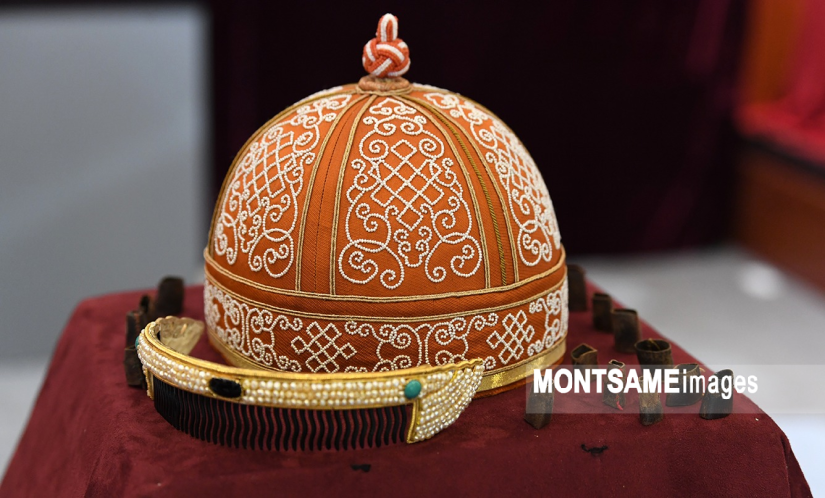
-As we
know, it is relatively rare for men to be specialized in embroidery. Would you say that your family could be considered
as the first family to do so?
-Yes,
it could be said that we are the first family of embroiders. Specially, silk
applique pieces require a lot of time and patience as its durability is suited
to our traditional way of living. There were times when I felt discouraged. And
it takes a lot of patience for men to do embroidery. As for my husband, he
might have been influenced by his interest in drawing. It has been over 10
years since my husband started to create embroidery pieces.
-Did
you inherit your skills from your parents?
-My
father was a craftsman, and my mother was skilled in handicrafts. I was also an
apprentice under a skilled craftsman named Budvaa from Umnugovi aimag. I met my
teacher, State Embroiderer, State Honored Artist S.Tsermaa, in Ulaanbaatar in 2013
who helped me start doing needlework for Buddhist art.
-As a
person who promotes the traditional art of embroidery, how many portraits of
Buddhist deities have you created through your needlework?
-My
husband and I hold a copyright
certificate for our pieces ‘Green Tara’ and ‘the
Buddha’. My
friend also gifted me pure
gold wire, which was used
for
sewing the ornaments of the ‘Bayan Namsrai’ deity with a needle. I put in all my efforts into my
works in hopes of contributing to the country’s cultural heritage.
-Will you sell your
pieces displayed at the exhibition?
-As all of the pieces
here at the exhibition have their respective owners, I had to get permission to
put them on display. So none of the pieces that have been displayed will be
sold. My teacher had once said, "If you don't have any artwork left, you
can consider yourself as an artist.”
-What
did you want to show through the exhibition?
-This
is how we are continuing to preserve Mongolia’s traditional heritage and
culture, and especially handmade embroidery. Through the exhibition, we hope
that youth who are interested in embroidery will work persistently and not give
up on the art, seeing that it took 20 years for us to create the ‘Golden
Soyombo’ piece.
 Ulaanbaatar
Ulaanbaatar







